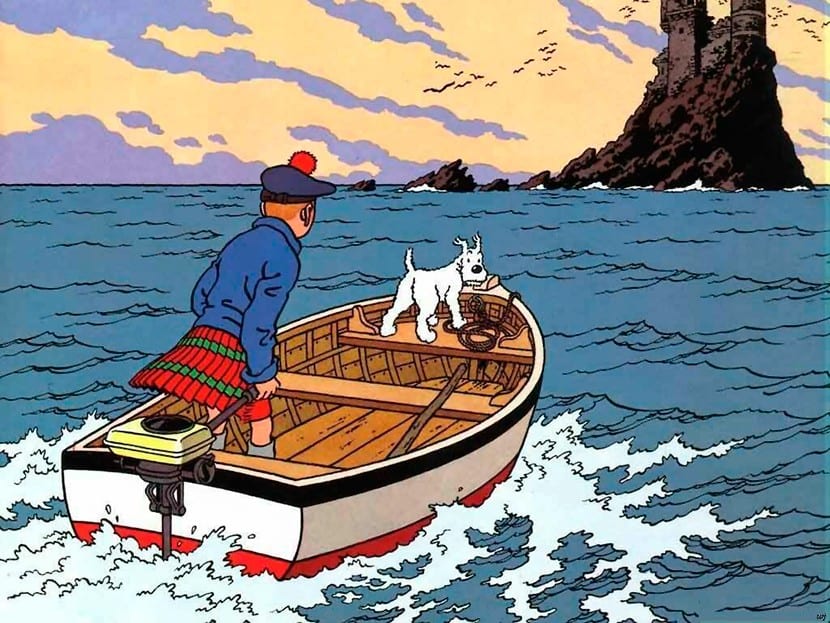
The clear line is a cartoon or comic style of Franco-Belgian origin, with several marked characteristics that define it. It has a good entourage of authors who have it for their graphic narratives. These authors make it their own and evolve it with their stories and characters, making it have a past, present and future from its creation and forgotten roots to the present day.
The clear line became popular and took its name in the last quarter of the XNUMXth century where the well-known Hergé, Georges Remi, the father of Tintin, became known for being the forerunner of this movement or graphic narrative style. Thanks to strict precepts, style commandments and keys in the way of narrating and drawing, the clear line marked the style from the 80s through the transition of the century and its influence reached many artists and cartoonists today.
The main characteristics that indicate that a job is covered under the umbrella of the clear line are the following:
Delimitation of the protagonist figures of the vignette by means of a continuous and refined line.
Absence of intermediate transition tones, black spots, or shadow and backlight effects.
Enhancement of the mask effect, or what it means to combine characters graphically marked as cartoony against a realistic environment, in order to focus the protagonist's attention on these key characters for the story.
Rigorous follow-up of the classic narrative, with vignettes or lightly loaded shots.
Fidelity for the history of a type of genre, especially the adventure story.
All these characteristics help a story to be understood very clearly without too many ulterior motives hidden in the drawing, where the reader can focus on the ease of the narrative, script and shots, without overwhelming him with contradictory literary sensations.

The Clear Line influenced by George McManus the creator of Bringing up Father
It is very common to give the title of creator of this style to Hergé, and although it was he who was in charge of popularizing it through Tinín and extending it to a whole generation of French-Belgian cartoonists and artists, giving a strong identity and founding a bastion in what is known like the European comic, it would be totally unfair not to mention George McManus, the famous author of Bringing up Father who with his daily strip delighted the readers of the American press at the beginning of the XNUMXth century.
George McManus had a direct impact with his style on Alain de Saint Hogan, we can observe it in his work Zig et Puce, and to end the chain of events and influences we will say that Hergé was a favorite student of Alain.
With this simple relationship of artists, we have a rectilinear line that unites the classic American comic from the beginning of the last century with the famous clear line, the latter taking root and giving identity to the European comic. This assertion cost many controversies among artists who had adopted this style of drawing and narrative in the 80s, but given such evidence it is difficult to doubt these influences.
The Clear Line, although in a previous concept, was born in that generation of the 80s as a result of the vindication of the artists with whom Hergé had shared works, and in whom he had aroused admiration, they realized that the Clear Line was evidently a style and had some precepts that were worth defendingSo they were encouraged to claim the French-Belgian European authorship.
Although this is a fact accepted by everyone and they should be fairly credited, we must not forget the pioneering influences that have created this style, as we have told you.